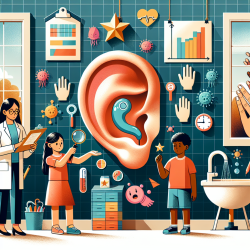Understanding PrEP for Adolescents: A Guide for Practitioners
Preexposure prophylaxis (PrEP) is a powerful tool in the fight against HIV, and its use among adolescents is gaining recognition. The research article "Preexposure Prophylaxis for Prevention of HIV Acquisition Among Adolescents: Clinical Considerations, 2020" offers valuable insights into how practitioners can enhance their skills in providing PrEP to adolescents. Here, we’ll explore key takeaways from the study and how they can be implemented in clinical practice.
Why PrEP for Adolescents?
PrEP has been shown to be effective in reducing the risk of HIV acquisition. Initially approved for adults, the FDA expanded its use to adolescents weighing at least 77 lbs in 2018. This expansion is crucial as certain adolescent populations are at similar risk levels for HIV as adults, particularly among young men who have sex with men (MSM).
Key Clinical Considerations
- Safety: The data supports the safety of PrEP in adolescents. Providers should be familiar with the clinical and laboratory-based monitoring recommended for those prescribed PrEP.
- Legal Issues: Providers must understand the legal landscape regarding minors’ consent to PrEP in their state. Most states allow minors to consent to STI diagnosis and treatment, which includes PrEP.
- Therapeutic Partnership: Building a partnership with adolescents and their parents is essential. Providers should recognize adolescents' autonomy and involve parents when safe and appropriate.
Improving Medication Adherence
Adherence to PrEP is critical for its effectiveness. The study highlights that adolescents often struggle with adherence, similar to adults. Frequent, supportive interactions, such as more regular clinical follow-ups, can help improve adherence. Practitioners should also consider innovative strategies like technology-focused interventions to support adherence.
Encouraging Further Research
The article encourages practitioners to engage in further research to better understand the unique needs of adolescents on PrEP. This includes exploring the impact of PrEP on bone density and the effectiveness of various adherence support strategies.
Conclusion
PrEP is a vital component of HIV prevention for adolescents at risk. By understanding the clinical considerations, legal issues, and strategies for improving adherence, practitioners can enhance their skills in providing PrEP to this population. For those interested in diving deeper into the research, further exploration of the original study is recommended.
To read the original research paper, please follow this link: Preexposure Prophylaxis for Prevention of HIV Acquisition Among Adolescents: Clinical Considerations, 2020.










